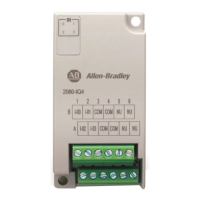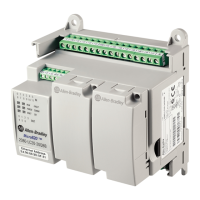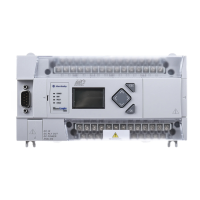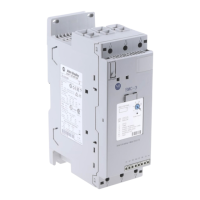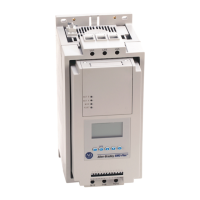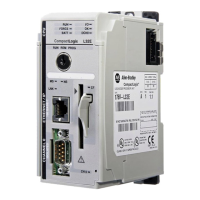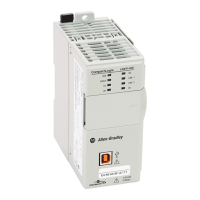58 Rockwell Automation Publication 2080-UM002N-EN-E - November 2022
Chapter 5 Communication Connections
The Micro800 controllers support the protocol through RS-232 connection to external devices,
such as computers running RSLinx® Classic software, PanelView™ Component terminals
(firmware revisions 1.70 and above), PanelView 800 terminals, or other controllers that support
CIP Serial over DF1 Full-Duplex, such as ControlLogix® and CompactLogix™ controllers that
have embedded serial ports. Bulletins 2080-L50E and 2080-L70E also support DF1 Half Duplex
and Radio Modem protocol.
EtherNet/IP, supported on the Micro850 and Micro870 controller, makes use of the standard
Ethernet TCP/IP protocol.
The Micro850 and Micro870 controller supports up to 23 simultaneous EtherNet/IP Server
connections.
To configure CIP Serial, see Configure CIP Serial Driver
on page 61.
To configure for EtherNet/IP, see Configure Ethernet Settings
on page 66.
For more information on DF1 protocol, see Connect to Networks using DF1
on page 335.
CIP Symbolic Addressing
Users may access any global variables through CIP Symbolic addressing except for system and
reserved variables.
One- or two-dimension arrays for simple data types are supported (for example, ARRAY OF
INT[1…10, 1…10]) are supported but arrays of arrays (for example, ARRAY OF ARRAY) are not
supported. Array of strings are also supported.
CIP Client Messaging
CIP Generic and CIP Symbolic messages are supported on Micro800 controllers through the
Ethernet and serial ports. These client messaging features are enabled by the
MSG_CIPSYMBOLIC and MSG_CIPGENERIC function blocks.
For more information and sample quickstart project to help you use the CIP Client Messaging
feature, see Micro800 Programmable Controllers: Getting Started with CIP Client Messaging,
publication 2080-QS002
.
Supported Data Types in CIP Symbolic
Data Type
(1)
(1) Logix MSG instruction can read/write SINT, INT, DINT, LINT, and REAL data types using “CIP Data Table Read” and “CIP Data
Table Write” message types.
BOOL, USINT, UINT, UDINT, ULINT, LREAL, STRING, SHORT_STRING, DATE, and TIME data types are not accessible with the Logix
MSG instruction.
Description
BOOL
Logical Boolean with values TRUE(1) and FALSE(0)
(Uses up 8 bits of memory)
SINT Signed 8-bit integer value
INT Signed 16-bit integer value
DINT Signed 32-bit integer value
LINT
(2)
(2) Not supported in PanelView Component or PanelView 800.
Signed 64-bit integer value
USINT Unsigned 8-bit integer value
UINT Unsigned 16-bit integer value
UDINT Unsigned 32-bit integer value
ULINT
(2)
Unsigned 64-bit integer value
REAL 32-bit floating point value
LREAL
(2)
64-bit floating point value
STRING character string (1 byte per character)
DATE
(3)
(3) Can be used by sending data to UDINT, mainly for use with PanelView Plus and PanelView 800 HMI terminals.
Unsigned 32-bit integer value
TIME
(3)
Unsigned 32-bit integer value
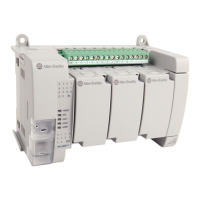
